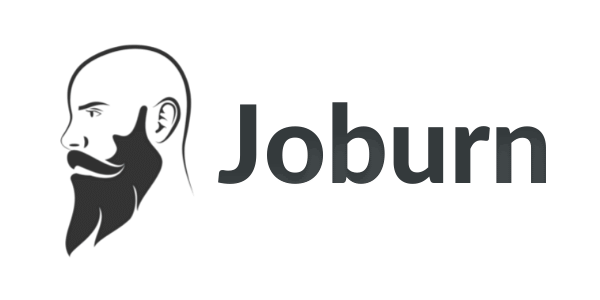Sales sprints are a powerful tool that can help sales teams stay focused, prioritize their efforts, and make progress on important tasks.
What is sales sprint ?
A sales sprint is a focused period of time during which a sales team works on a specific set of tasks or goals. It is typically used to help sales teams stay focused, prioritize their efforts, and make progress on important tasks.
What is sales sprint used for?
Sales sprints are often used in conjunction with agile sales techniques, which emphasize the importance of continuous iteration and improvement. By using sales sprints, sales teams can break down larger goals into smaller, more manageable chunks and work on them in a focused and organized way.
What is an example of sales sprint ?
An example of a sales sprint might be a sales team that sets a goal of increasing sales by a certain percentage over the course of a month. The team might then break this goal down into smaller goals that can be achieved over the course of several sprints, such as increasing sales to a specific customer segment or improving the sales process in a specific area. The team would then work on achieving these goals during each sprint, gathering feedback and making adjustments as needed.
What is the history of sales sprint ?
The concept of the sales sprint is based on the principles of agile software development, which originated in the early 1990s. The agile software development movement was a response to traditional, rigid software development methodologies that were slow to adapt to changing market conditions and customer needs. Agile principles, which emphasize collaboration, flexibility, and the ability to quickly respond to change, have since been applied to a wide range of business areas, including sales.
What is the importance of sales sprint ?
The importance of sales sprints lies in their ability to help sales teams stay focused, prioritize their efforts, and make progress on important tasks. By breaking down larger goals into smaller, more manageable chunks and working on them in a focused and organized way, sales teams can stay on track and make steady progress towards their objectives.
What is the benefit of sales sprint ?
There are several benefits to using sales sprints, including:
- Improved focus: By setting specific goals and working on them in a focused way, sales teams can stay on track and avoid getting sidetracked by other tasks.
- Increased efficiency: Sales sprints can help sales teams prioritize their efforts and eliminate distractions, leading to more efficient and effective sales processes.
- Improved collaboration: Sales sprints often involve collaboration and teamwork, which can help sales teams work more effectively as a unit.
- Enhanced visibility: Sales sprints provide a clear and structured way of tracking progress, which can help sales teams identify areas where they are making progress and areas where they need to improve.
What is the disadvantage of sales sprint ?
One potential disadvantage of sales sprints is that they may not be suitable for all types of sales processes or goals. For example, sales sprints may not be appropriate for sales processes that are very complex or that require a long lead time. Additionally, sales sprints may not be suitable for sales teams that are working on multiple, unrelated goals at the same time, as they may not provide enough flexibility to accommodate different priorities.
What are the principles of sales sprint?
The principles of sales sprints are based on the principles of agile software development, which include:
- Prioritize customer needs: Sales sprints should prioritize customer needs and preferences above all else.
- Emphasize collaboration: Sales sprints should rely on collaboration and teamwork to identify and address customer needs.
- Embrace change: Sales sprints should be flexible and adaptable, and be able to quickly respond to changing market conditions and customer needs.
- Focus on results: Sales sprints should focus on delivering results for customers, rather than on following a rigid sales process.
What is sales sprint framework?
A sales sprint framework is a set of tools and processes that are used to implement a sales sprint. This might include techniques such as daily stand-up meetings, customer feedback sessions, and sprint planning. The specific components of a sales sprint framework will depend on the needs and goals of the sales team and the nature of the sales process.
What are the steps for sales sprint ?
The steps for implementing a sales sprint might include:
- Identify the goals and objectives that the sales team wants to achieve during the sprint.
- Break down these goals into smaller, more manageable tasks that can be completed during the sprint.
- Implement a sales sprint framework that includes tools and processes such as daily stand-up meetings, customer feedback sessions, and sprint planning.
- Work on completing the tasks and goals that have been identified for the sprint, gathering feedback and making adjustments as needed.
- Monitor the progress of the sales sprint and make adjustments as needed to ensure that it is effective and efficient.
What is sales sprint rituals?
Sales sprint rituals are the guiding activities for a sales team using sprint methodology.
Here are the most common rituals:
- Sprint planning: choosing priority sales activities.
- Sprint kick-off: The official start of a sprint period.
- Daily stand-ups: 15-minute discussions where each person mentions what they did yesterday, what they will do today, and anything blocking them.
- Sprint review: compare planned objectives vs accomplished objectives.
- Sprint retro: evaluate which rituals are working well or how they could be structured differently to support the team.
What is the decision process in sales sprint?
The decision process in a sales sprint typically involves continuously gathering and responding to customer feedback in order to identify opportunities for improvement and make adjustments to the sales process. This might involve techniques such as customer feedback sessions, market research, and sales data analysis.
What are sales sprint techniques?
Sales sprint techniques are tools and processes that are used to implement a sales sprint. These might include daily stand-up meetings, customer feedback sessions, and sprint planning. Some common sales sprint techniques include:
- Daily stand-up meetings: These are brief meetings that are held daily to review progress, discuss any issues or challenges, and plan for the next day.
- Customer feedback sessions: These are meetings or sessions in which the sales team gathers feedback from customers about their needs and preferences, and uses this feedback to iterate and improve the sales process.
- Sprint planning: This is the process of identifying the specific tasks and goals that will be worked on during a sprint, and breaking them down into smaller, more manageable chunks.
- Kanban boards: These are visual tools that are used to track the progress of tasks and goals during a sprint.
- Retrospectives: These are meetings that are held at the end of a sprint to review what went well, what could be improved, and what lessons were learned.
Is sales sprint a skill?
Sales sprint is a skill that can be learned and developed through training and experience. It requires a collaborative, flexible, and customer-focused approach to sales, and it involves continuously gathering and responding to customer feedback to iterate and improve the sales process.
What are the important skills to know in sales sprint?
Some important skills to know in sales sprint include:
- Collaboration and teamwork: Sales sprints often involve collaboration and teamwork, so the ability to work effectively with others is essential.
- Flexibility and adaptability: Sales sprints require the ability to quickly respond to changing market conditions and customer needs, so being flexible and adaptable is important.
- Customer focus: Sales sprints are focused on meeting the needs and preferences of customers, so the ability to understand and address customer needs is crucial.
- Communication: Sales sprints involve continuous communication with customers, team members, and other stakeholders, so strong communication skills are important.
- Problem-solving: Sales sprints often involve identifying and addressing challenges and obstacles, so the ability to think creatively and solve problems is important.
How to learn sales sprint
To learn sales sprint, you might consider the following options:
- Training: There are many training programs and courses available that can teach you the principles and practices of sales sprints.
- Online resources: There are many online resources available that can help you learn about sales sprints, such as articles, webinars, and online courses.
- On-the-job experience: The best way to learn sales sprints is to get hands-on experience by working on a sales team that uses sprints or implementing sprint techniques in your current role.
How to ask questions on sales sprint
To ask questions about sales sprints, you might consider the following:
- Seek out mentors or experienced professionals who can provide guidance and advice.
- Join online communities or forums where you can ask questions and connect with other professionals who are interested in sales sprints.
- Attend industry events or conferences where you can learn from experts and ask questions.
- Consider seeking out additional training or education to help you learn more about sales sprints.
What is the difference between agile and traditional sales?
The main difference between agile and traditional sales is the approach to sales processes. Traditional sales typically involves a more rigid, linear approach to sales, with a focus on following a predetermined sales process and meeting specific sales targets. Agile sales, on the other hand, is more flexible and adaptable, and emphasizes the importance of continuously gathering and responding to customer feedback in order to iterate and improve the sales process.
Can you use agile in sales?
Yes, agile principles can be applied to sales in order to make the sales process more flexible, responsive, and adaptable to changing customer needs and preferences. Agile sales involves continuously gathering and responding to customer feedback in order to iterate and improve the sales process, and it emphasizes collaboration, teamwork, and the ability to quickly respond to changing market conditions. Agile sales can be used in a variety of sales contexts, including business-to-business (B2B) sales, business-to-consumer (B2C) sales, and in both product and service-based organizations. It is particularly well-suited for complex sales processes or environments where customer needs and preferences are rapidly changing.

